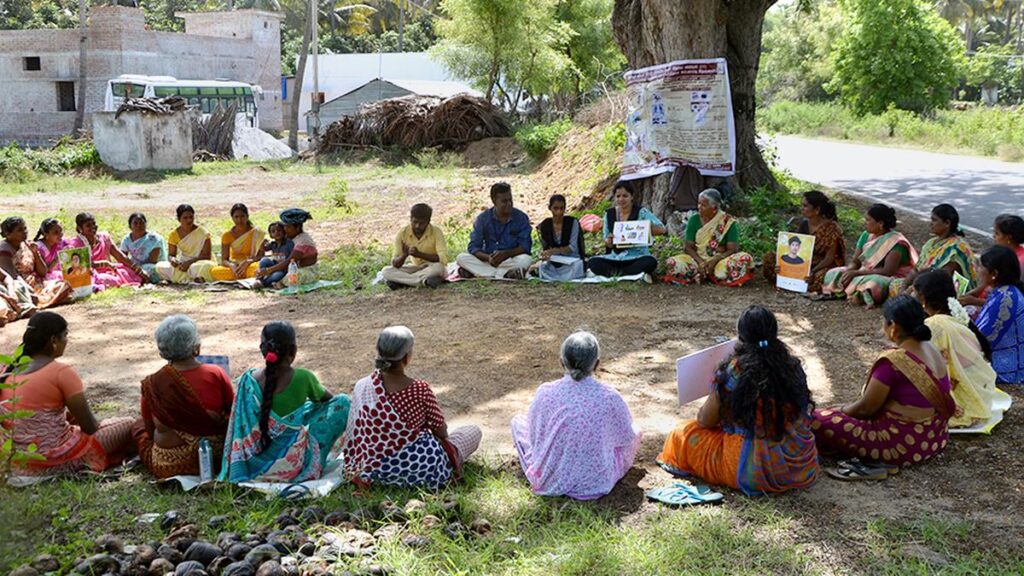
The health system forgets that TB is not a medical condition alone; it exists and is fought in a social context and within families and communities. Photograph used for representational purposes only
It’s World TB Day again on March 24 and despite bold claims tuberculosis (TB) remains one of the most pressing global health challenges, disproportionately affecting marginalised communities. Despite being preventable and treatable, TB continues to take a significant toll on humanity. According to the World Health Organization’s Global Tuberculosis Report 2024, an estimated 10.8 million people developed active TB in 2023, resulting in approximately 1.25 million deaths worldwide. While medical advancements in TB treatment and diagnosis play a crucial role, they alone cannot eliminate TB. What we need is the power of community engagement to ensure TB prevention, timely diagnosis, treatment adherence, and public awareness. The health system forgets that TB is not a medical condition alone; it exists and is fought in a social context and within families and communities. This makes active community participation a fundamental part of an effective TB response.
So what does community engagement in TB care mean? It involves those most impacted — TB affected, survivors, families, communities and grassroots organisations. Their participation is essential at multiple levels- in co-designing care models, shaping awareness campaigns, and creating treatment support programs that address both the medical but also the social and economic barriers in TB care.
If we integrate lived experiences of those affected by TB into our healthcare response, communities can accurately define gaps, challenges and also what kind of support systems those affected need, what messages resonate with them, and how best to design services to ensure equitable access to care. The role of communities is not just to contribute ideas but also to actively participate in TB care itself. Survivors, for instance, can play a key role in sensitising healthcare workers and volunteers, helping them understand the lived realities of those affected, ensuring dignified, stigma-free services reach those who need them most.
Community engagement is key to reducing stigma
Beyond improving care access, community engagement also plays a crucial role in reducing TB-related stigma. Stigma remains one of the biggest barriers to early diagnosis and treatment, as fear of discrimination often discourages affected individuals from seeking medical help or speaking about their experiences. Survivor-led advocacy and family and community-driven narratives can transform public perceptions of TB, normalising discussions around TB and encouraging people to take action early.
Despite the clear benefits, meaningful community involvement in TB policy remains absent. Individuals affected by TB are excluded from advocacy, policymaking and communication efforts due to persistent stigma. Additionally, national TB programmes often find it difficult to integrate community members into their medicalised, expert-led frameworks, limiting opportunities for grassroots involvement.
Often, community participation is reduced to tokenism, where engagement is sought only for validation rather than equal partnership. Also, without adequate funding and institutional support, grassroots organizations struggle to create impact and bring about long-term change. Many national TB programmes still operate within a rigid, top-down structure, where policies are created without meaningful input from the communities they aim to serve. This disconnect weakens the overall effectiveness of TB programs and perpetuates barriers to care.

Where the model has worked
There are notable examples where community-driven initiatives have successfully demonstrated the power of community engagement. In India, Survivors Against TB (SATB) India’s first survivor-led advocacy movement has effectively raised and advocated for patient rights, policy changes, nutritional and mental health support and public awareness. In South Africa, the Desmond Tutu TB Centre has combined research, community participation, and policy advocacy, with innovative programs like the “Kick TB” campaign, which uses soccer to educate schoolchildren about TB. These initiatives prove that when communities are given leadership roles in TB response, they can drive sustainable change.
Community engagement must be reimagined as a co-creative process rather than a peripheral activity. It’s time for impacted communities to be at the forefront of policy-making, ensuring their lived experiences shape interventions at every stage. Training and capacity-building must be a two-way process, where national TB programmes learn from community members just as much as they provide technical education. Furthermore, financial investment is essential—not only in medical services but also in community-led advocacy, education, and structural reforms that empower local organisations to take ownership of TB programmes.
The fight against TB requires a shift in mindset that puts those affected first, before numbers. This is a difficult transition. Medical interventions alone will not eliminate TB. By placing those affected at the center of TB policy, care provision, and research, we can move away from tokenism and towards substantively redefining the TB care paradigm making it empathetic, equitable and person-centered. Only by fostering genuine partnerships, shared decision-making, and sustained investment can we create a future where TB is no longer a global public health threat.
(Chapal Mehra is a public health specialist and the Convenor of Survivors Against TB (SATB), a collective of survivors, advocates and experts working on TB and related comorbidities. Vashita Madan is the communications lead with SATB. [email protected])
Published – March 21, 2025 06:00 am IST

